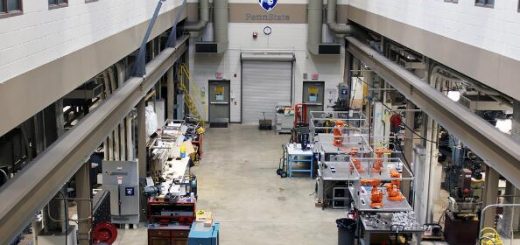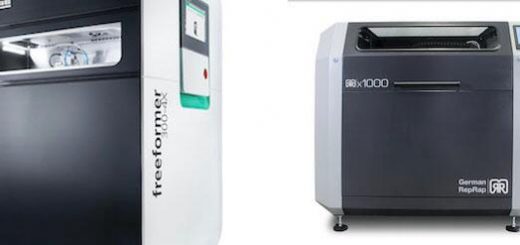3D Printed Rubber-Like Material Can Self-Repair When Broken
Materials research is getting to a point where—at least to me—it seems to be reaching into the realm of sci-fi. 4D printed, shape-shifting materials and tissue-resembling hydrogels are just a couple of examples that come to mind. Another recent research project, being undertaken at the University of Southern California, grabbed my attention recently with 3D printed materials that can self-repair.
The innovative material, which can be rapidly 3D printed using a photopolymerization process, can actually repair itself if is torn, fractured or punctured. Down the line, the material could be a game-changer for the footwear, tire, soft robotics and electronics manufacturing industries as it could help increase the durability and lifespan of products.
 Photo: An Xin and Kunhao Yu
Photo: An Xin and Kunhao Yu
Aside from its self-repairing qualities (which will be elaborated on below), the 3D printable material is also designed to be manufactured rapidly. That is, using a photopolymerization 3D printing process, parts can be printed within as little as 20 minutes (with a build rate of about 5 seconds per 17.5 square millimeters).
The material itself integrates unique chemical properties which not only enable it to solidify when exposed to light but also to repair itself when warmed. As the researchers explain: “Photopolymerization is achieved through a reaction with a certain chemical group called thiols. By adding an oxidizer to the equation, thiols transform into another group called disulfides. It is the disulfide group that is able to reform when broken, leading to the self-healing ability.”
In developing the material, the researchers, led by assistant professor Qiming Wang, had to find the perfect balance between the two groups of chemicals, ensuring that the ratio would enable printability and repairability.
“When we gradually increase the oxidant, the self-healing behavior becomes stronger, but the photopolymerization behavior becomes weaker,” added Wang. “There is competition between these two behaviors. And eventually we found the ratio that can enable both high self-healing and relatively rapid photopolymerization.”
To demonstrate how the material works, the research team 3D printed a number of items, including a shoe pad, soft robot, multiphase composite and an electronic sensor, which they subsequently cut in half. Within two hours (and heated at 60°C), most of the parts had fully repaired themselves. The electronic sensors took slightly longer (four hours) because of the carbon used to transmit electricity. The researchers specify that the healing time can be decreased by raising the temperature.
“We actually show that under different temperatures—from 40 degrees Celsius to 60 degrees Celsius—the material can heal to almost 100 percent,” said Kunhao Yu, a structural engineering student who was first-author of the study. “By changing the temperature, we can manipulate the healing speed, even under room temperature the material can still self-heal.”
The research project is moving ahead as the team is now exploring different stiffnesses for the self-repairing materials, from soft, rubber-like materials to hard plastics. The latter group could have applications in vehicle parts, composite materials and body armor.
Source:3D Printing Media




Recent Comments